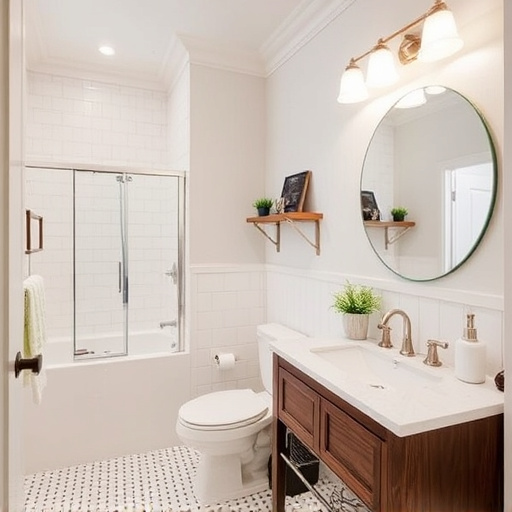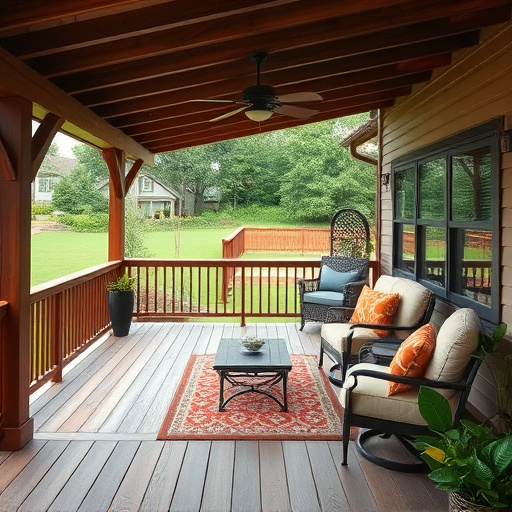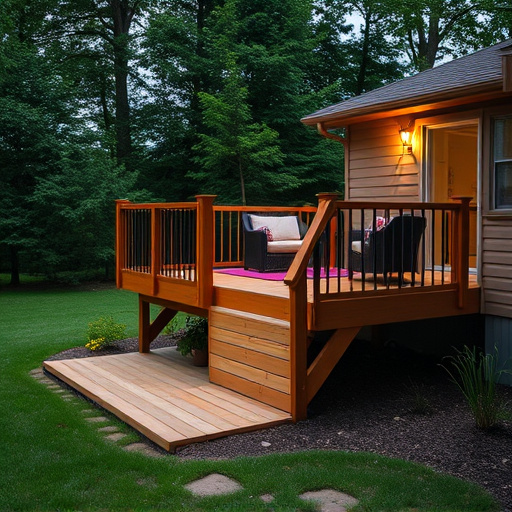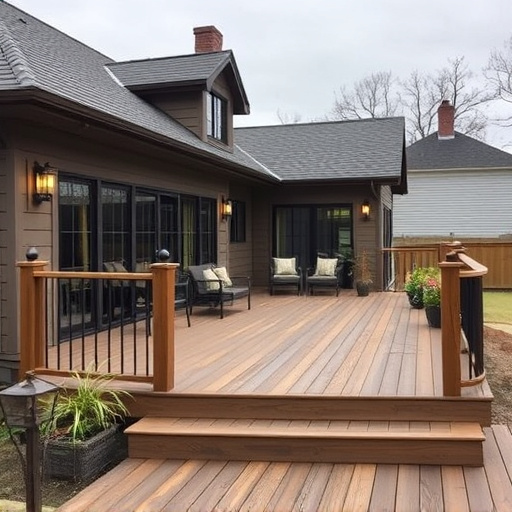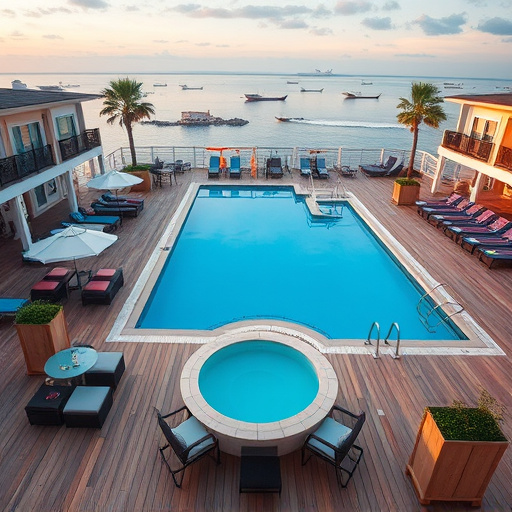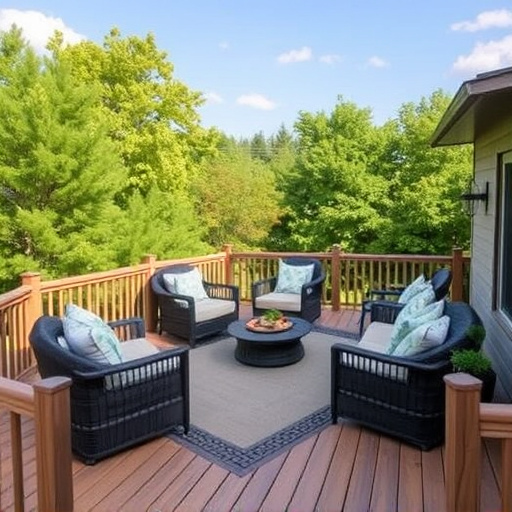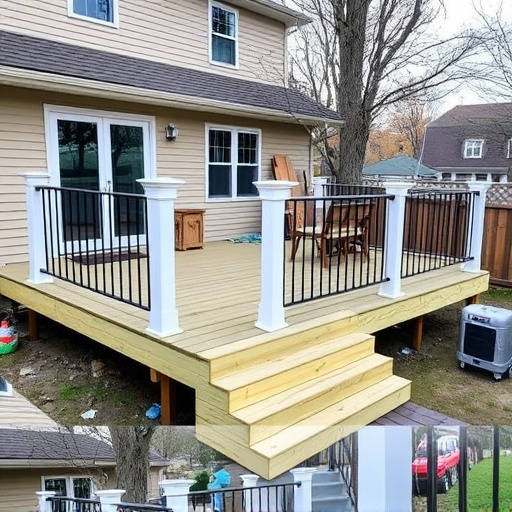Deck design prioritizes safety through local building codes, guardrails, non-slip surfaces, and durable materials. Regular maintenance ensures longevity, enhancing outdoor living while mitigating falls and accidents. Compliance with standards and tailored features improve aesthetics and reduce future repairs.
“Creating a stunning deck is an exciting project, but prioritizing safety is paramount. When designing your outdoor space, ensure compliance with local deck safety standards and regulations. This guide explores essential aspects of planning a deck that caters to both aesthetics and security. From understanding regulatory requirements to selecting robust materials, we’ll navigate the process, ensuring your deck is not only beautiful but also safe for years to come. Discover expert tips on guardrails, handrails, material choices, and maintenance routines.”
- Understanding Deck Safety Standards and Regulations
- Incorporating Guardrails and Handrails for Protection
- Choosing Safe Materials and Maintenance Tips for Durability
Understanding Deck Safety Standards and Regulations
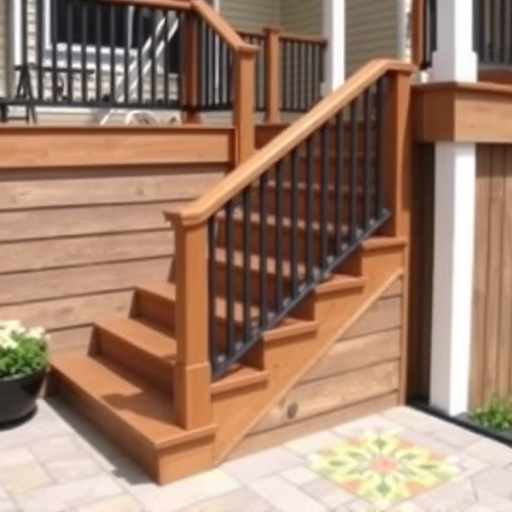
When planning a deck design, understanding safety standards and regulations is paramount to ensure a secure and enjoyable space. Deck safety involves adhering to local building codes and industry best practices to prevent accidents and falls. These guidelines cover various aspects, including structural integrity, guardrail heights, ladder placement, and non-slip surfaces. Always consult the latest code requirements relevant to your region to create a safe deck that meets both regulatory standards and your design vision.
For both residential and commercial siding projects, prioritizing safety is key. Home service solutions can provide expert advice on deck design while ensuring compliance with local regulations. Moreover, when considering renovations or new constructions, siding replacement should be part of the plan. A well-designed deck that incorporates these safety measures will offer a secure environment for all users, enhancing outdoor living without compromising safety.
Incorporating Guardrails and Handrails for Protection
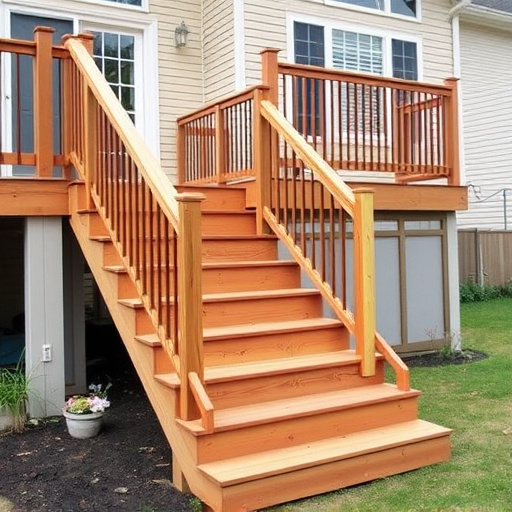
When planning a deck design with safety as a top priority, incorporating guardrails and handrails is essential for protecting users from potential falls and accidents. These structures serve as vital components in any deck structure, providing a robust barrier that prevents individuals from plummeting into dangerous areas like steep drops or bodies of water. Guardrails, typically installed along the perimeter of the deck, act as a physical barrier, while handrails offer a secure point of contact for users to lean on or grab, ensuring stability and balance.
Properly designed guardrails and handrails not only enhance safety but also contribute to the overall aesthetics of the deck. They can be tailored to match the style and design of the deck, seamlessly integrating with various materials like wood, metal, or glass. Moreover, regular inspection and maintenance of these safety features are crucial, especially after severe weather events or in areas prone to storm damage repair. Regular checks ensure that they remain sturdy and secure, upholding their protective role for many years, and potentially preventing costly siding installation or replacement.
Choosing Safe Materials and Maintenance Tips for Durability
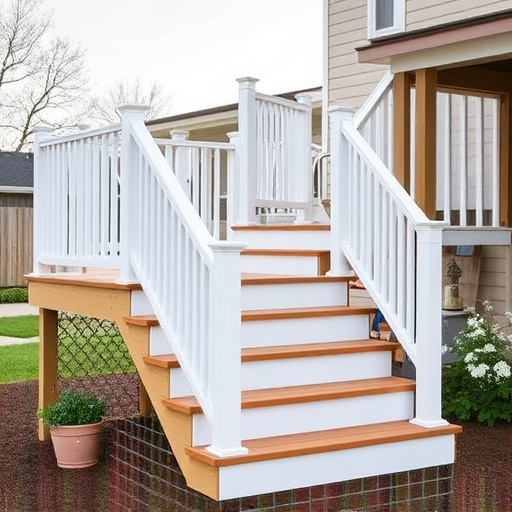
When planning a deck design with safety in mind, selecting robust and safe materials is paramount. Opt for high-quality decking boards that are resistant to rot, decay, and insects. Treated wood, composite materials, or even metal are excellent choices known for their longevity and low maintenance requirements. Ensure the chosen materials comply with safety standards, especially if your region has specific guidelines for outdoor structures.
Regular maintenance is crucial for deck durability. Keep the deck clean by sweeping it to remove debris and leaves, which can accelerate wood deterioration. Apply a fresh coat of sealant or stain annually to protect the surface from environmental elements, especially in regions with harsh winters or frequent rainfall. Consider incorporating features like non-slip surfaces, guardrails, and proper lighting to enhance safety during various weather conditions, ensuring your deck remains a safe and enjoyable space for years to come. Integrating these practices alongside thoughtful design choices will contribute to both the aesthetics and safety of your exterior home improvements, potentially reducing the need for future roof replacements or siding services.
When planning a deck design with safety in mind, adhering to standards and incorporating essential features like guardrails and handrails is crucial. Choosing durable materials and maintaining your deck regularly ensures not only longevity but also the well-being of those who use it. By following these guidelines, you can create a beautiful and secure outdoor space that enhances your living area without compromising safety.


